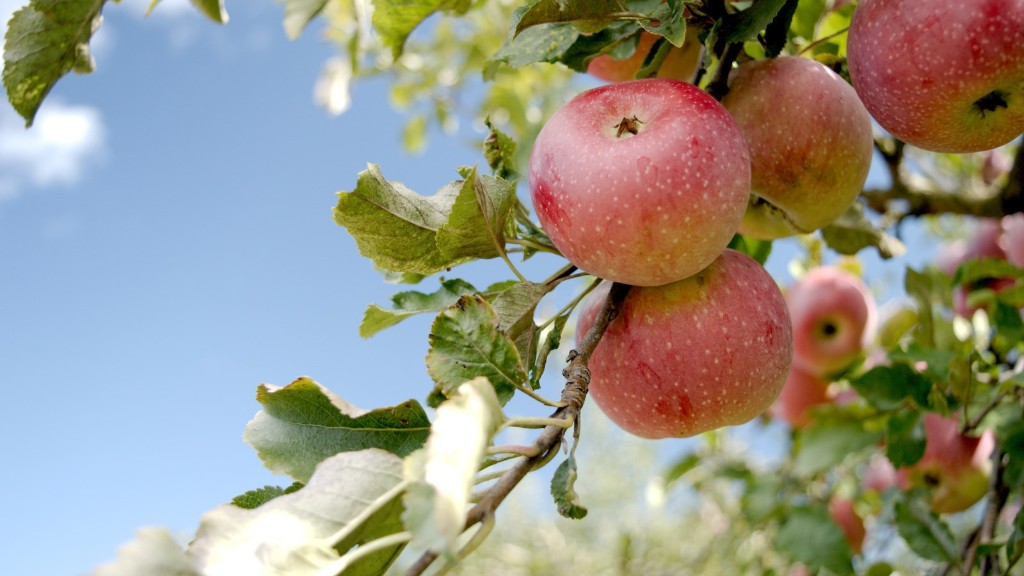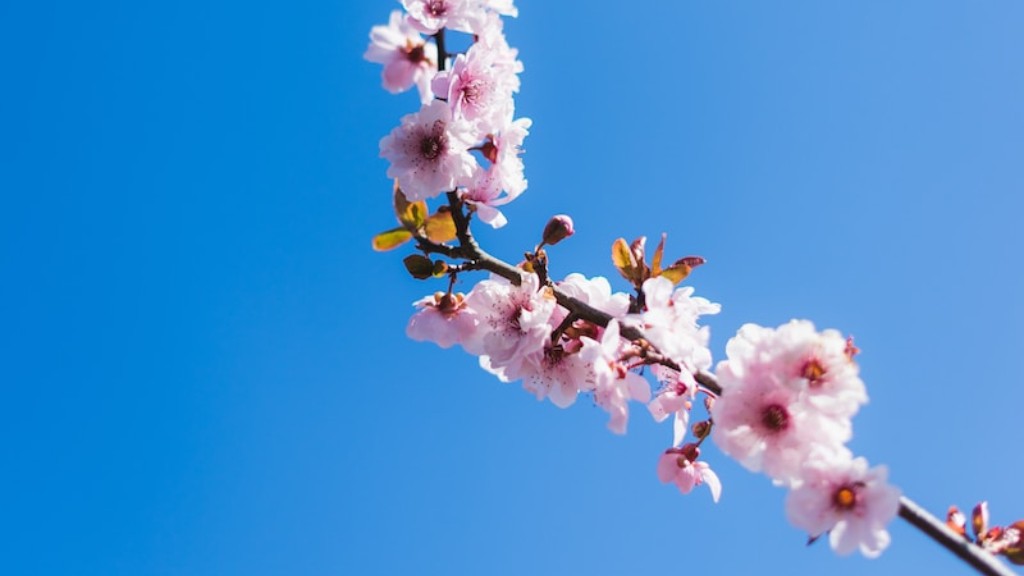Apple trees require regular pruning to maintain shape and encourage healthy growth. When pruning apple trees, it is important to consider what is needed for the tree to remain healthy, as well as maintain its aesthetic appeal. Here’s what an apple tree should look like after it’s been pruned.
Leaves should be thinned to allow light and air to reach all parts of the tree. This will promote healthy growth in all areas, and prevents the development of fungal diseases. To thin out the leaves, removal of up to a quarter of the canopy is recommended. Be sure to keep an “open centre” where a majority of the branches and leaves are removed, in order to allow the most light and air to reach the lower branches.
It is also important to deadhead any blossoms that have not set fruit. This will force the tree to put more energy into setting fruit, several branches at once if possible. Try to keep a good balance between the leaves and fruit on the branches, as too much fruit on a single branch can cause it to break.
The remaining branches should be pruned to give them better structure and to ensure they receive the most sunlight. Overly vigorous shoots should be removed to prevent crowding the tree. Prune them back to a lateral bud so that just the main branches are left, and you should also trim any other unwanted branches. The main branches should be pruned just above a outward-facing bud to encourage growth and flowering, as well as outward branching.
Finally, you should thin out any secondary shoots to reduce competition for light and resources between branches. This will also promote fruiting, as the tree puts energy into producing fewer and higher quality fruit. Make sure to leave enough foliage so the tree doesn’t become overly stressed; otherwise, it can result in stunted growth and damage to the health of the tree.
Common Mistakes When Pruning Apple Trees
When it comes to pruning apple trees, one of the most common mistakes is over-pruning. This can remove too much of the tree’s canopy and limit the amount of fruit the tree produces. Remember that it is important to thin the canopy and deadhead flowers, but to do so in moderation. Another common error is not pruning correctly and thus weakening the structure of the tree. This can cause branches to break, making it difficult to harvest fruit from the tree.
Incorrect pruning can also lead to diseases such as fire blight or silver leaf fungus, as unbalanced or overcrowded branches can allow the spread of fungi. To reduce the risks of disease, it’s important to prune trees correctly and in moderation. Poorly pruned trees are also more susceptible to sunburn or frost damage, as they are not able to draw up nutrient-rich water from the roots.
Benefits of Pruning Apple Trees
Pruning apple trees is essential to controlling the size and shape of the tree, as well as boosting yield and quality of apples. Proper pruning encourages a healthy tree by improving structuring, circulating sunlight, and increasing air circulation. This helps fruit to mature properly, and when done correctly, it can boost the tree’s production of apples.
In addition to its benefits for the tree itself, regular pruning of apple trees offers a variety of benefits for people. Pruning apple trees improves the aesthetics of gardens, as well as allowing for increased sunlight in areas beneath the tree. Pruning also provides more space for other trees and plants to grow, enabling the landscape to be maximized.
Furthermore, pruning apple trees contributes to the safety of people, animals, and other plants. Unpruned trees are far more likely to fell or break branches, as they are unsupported by the structure of the tree. Pruning apple trees can also reduce the risks of fungal diseases, which can cause fruit and foliage to be damaged or destroyed.
How to Prune an Apple Tree
The best time to prune apple trees is during the winter while the tree is dormant. This gives the tree time to heal from any pruning cuts and also avoids interfering with flowering and fruiting. Always make sure your tools are sharp, as this will result in cleaner and more precise pruning cuts. When pruning, it is also important to be aware of any hidden branches, as these can be damaged if not taken into account.
Remove thin twigs, suckers, and water sprouts first. Cut these back to their point of origin so there are no stubs left over. Remove older branches that are weak or have deadwood. Cut these branches close to their point of origin. Also, remove any vertically growing branches to promote outward growth. For best results, cut back to a strong, outward-facing bud.
Thin out the canopy next. Remove up to one quarter of the branches to allow light and air to reach the interior of the tree. This will promote better fruit production. Finally, thin out any secondary shoots to reduce competition between branches and ensure they receive the most sunlight.
Training Apple Trees
Training an apple tree is the process of shaping and pruning the tree to fit a desired form. Training an apple tree requires a knowledge of the growth habit of the species you are working with and understanding the balance between restorative and corrective pruning. Pruning and training can cause a great deal of stress on the tree, so it’s important to prune slowly and carefully over a period of years.
For the majority of apple trees, training and pruning should begin when the tree is young. This will help the tree stay healthy, productive, and aesthetically pleasing for many years to come. This can be done by thinning out competing branches, removing the leaders to encourage outward branching, and pinching back tips of vigorous shoots.
When pruning and training apple trees, it is important to consider the limitations of the species. As different apple species grow differently, the training techniques will vary. For example, semi-dwarf trees will require more frequent pruning and training to maintain their size. On the other hand, standard-sized trees can have less pruning and training applied.
Tips for Pruning Apple Trees
When pruning apple trees, it’s important to remember a few key points. Firstly, always use sharp, sterile tools when pruning. This will result in cleaner and more precise cuts, which will help the tree heal better. It is also important to prune branches at the right angle; the ideal angle is an outward-facing bud, as this will encourage the tree to grow outward rather than upward.
Remove deadwood, weak branches, and water sprouts before thinning the canopy or deadheading blossoms. As a general rule, only remove up to a quarter of the canopy to allow enough foliage to remain on the tree. Also, be mindful of overcrowding and competition between branches. When pruning, try to leave just the main branches and thin out any secondary shoots.
Finally, it is important to prune in moderation and to take into consideration the limitations of the tree’s species. Apple trees should generally be pruned during the winter so the tree has time to heal. Remember to also select an appropriate training technique for your apple tree based on its size and growth habit.



